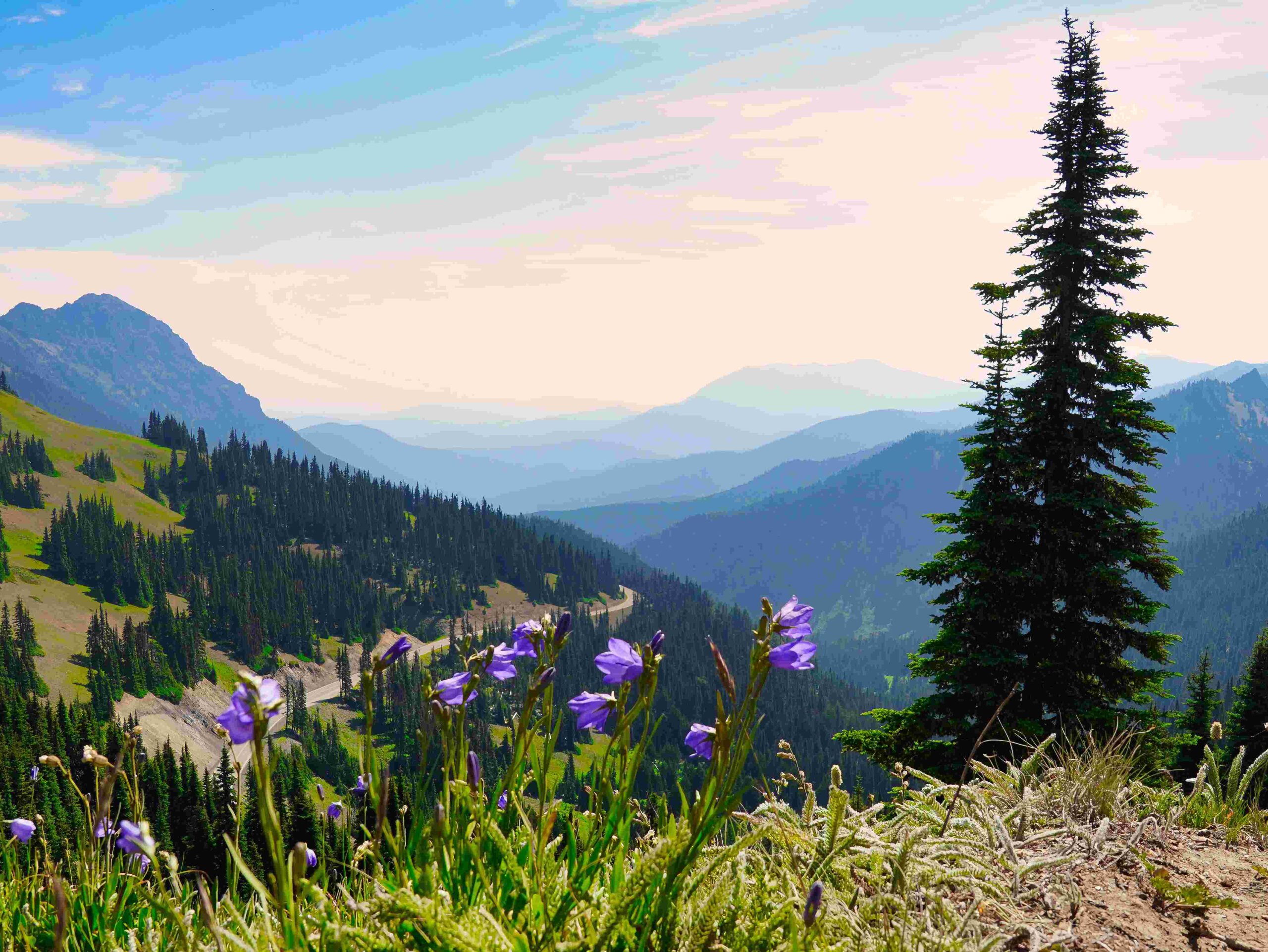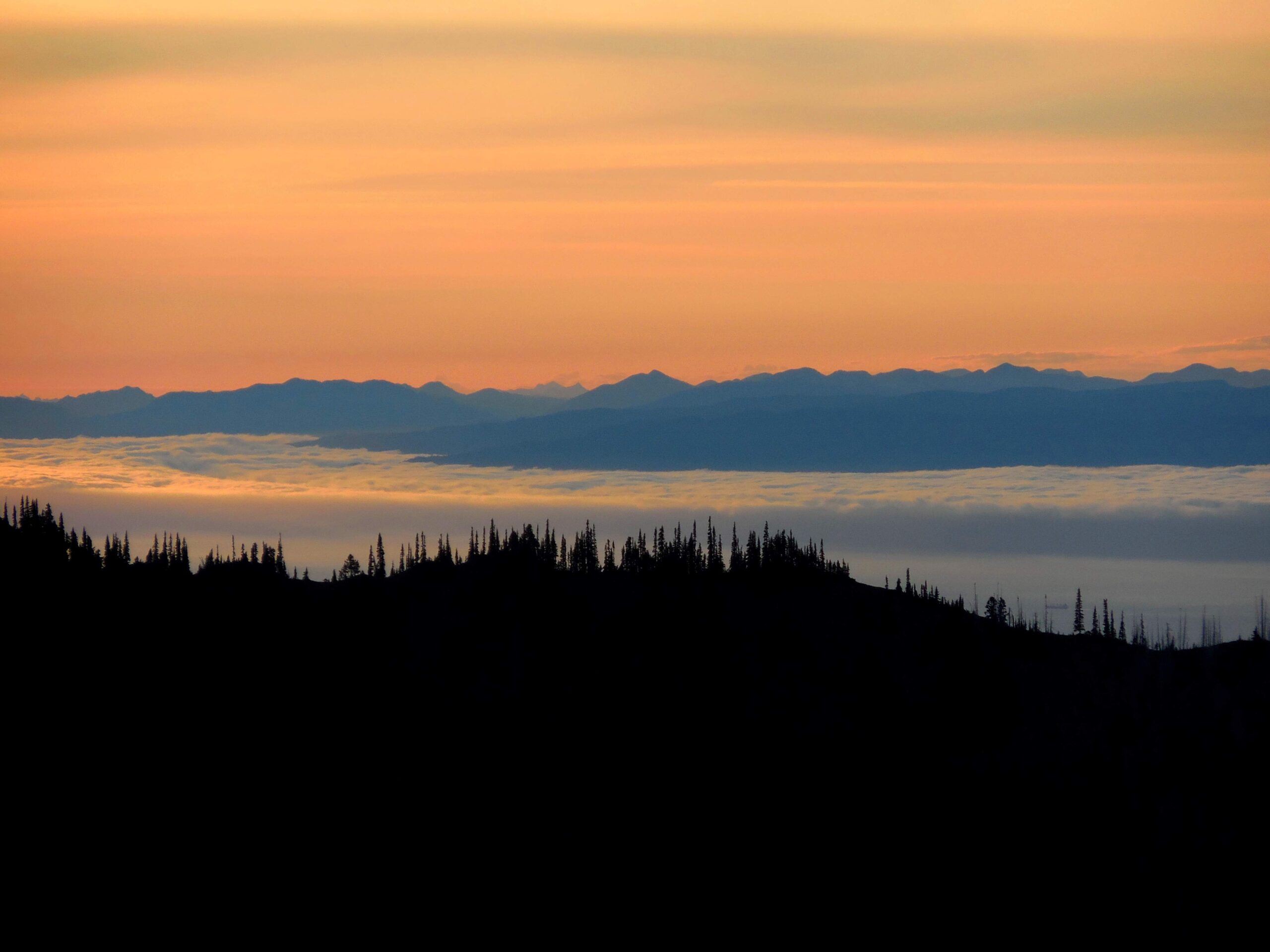The Olympic National Park rainforest is a lush, verdant wonderland nestled in the heart of Washington State. This temperate rainforest receives up to 14 feet of annual rainfall, creating a unique ecosystem teeming with diverse flora and fauna. Towering old-growth trees, draped in moss and ferns, dominate the landscape, while crystal-clear rivers wind through the forest floor. Visitors can explore numerous trails, observe wildlife, and immerse themselves in the serene beauty of this ancient woodland.
What Are the Must-See Trails in the Olympic National Park Rainforest?

The Olympic National Park rainforest offers a variety of trails suitable for different skill levels and interests. Here are some of the most popular and scenic routes:
Hoh Rain Forest Trails
Hall of Mosses Trail
- Length: 1.1 miles
- Elevation gain: 78 feet
- Difficulty: Easy
This short loop trail is perfect for families and those looking for a quick immersion into the rainforest. As you walk, you’ll be surrounded by giant trees covered in hanging moss, creating an otherworldly atmosphere.
Spruce Nature Trail
- Length: 1.4 miles
- Elevation gain: 16 feet
- Difficulty: Easy
Similar to the Hall of Mosses, this easy loop showcases large Sitka spruce and hemlock trees, as well as primeval ferns. It’s an excellent option for those wanting a slightly longer walk without much elevation change.
Hoh River Trail
- Length: Up to 34.6 miles (variable)
- Elevation gain: 3,700 feet (for the full trail)
- Difficulty: Hard (full trail), Easy to Moderate (shorter sections)
This trail offers flexibility for hikers of all levels. For a shorter option, consider hiking to Mineral Creek Falls, a 5.6-mile out-and-back trip with less than 250 feet of elevation gain. More experienced hikers can tackle the full trail, which ends at a breathtaking vista overlooking a glacier.
Bogachiel Rain Forest Trails
Bogachiel Rain Forest Trail #825
- Length: 1.6 miles to the Olympic National Park boundary, continues for 30 miles into the park
- Elevation gain: Moderate grades
- Difficulty: Easy to Intermediate
This trail serves as an access point to the Olympic National Park and is part of the Pacific Northwest National Scenic Trail. Hikers will experience old-growth rainforest, hanging mosses, and wetlands.
Ira Spring Wetland Trail #825.1
- Length: 2.9 miles (loop)
- Elevation gain: Minimal
- Difficulty: Easy
This wetland loop offers unique views of the rainforest ecosystem, showcasing the diverse habitats within the park.
What Wildlife Can Be Seen in the Olympic National Park Rainforest?

The Olympic National Park rainforest is home to a diverse array of wildlife. Here are some of the animals you might encounter:
- Roosevelt Elk: Approximately 400-500 of these majestic creatures live in the Hoh Valley.
- Deer: Frequently spotted throughout the rainforest.
- Black Bears: Present in the deeper parts of the forest.
- Salmon: Found in the rivers and streams, playing a crucial role in the ecosystem.
Wildlife Viewing Safety Tips:
- Maintain a safe distance from all wildlife.
- Never feed wild animals.
- Be aware of your surroundings, especially in areas known for bear activity.
- Consider joining a guided tour for expert insights and added safety.
What Amenities Are Available in the Olympic National Park Rainforest?
The park offers various amenities to enhance your visit:
Restroom Facilities
- Hoh Rain Forest Visitor Center: Full restroom facilities
- Trailheads: Vault toilets at various locations
Picnic Areas
- Near the Hoh Rain Forest Visitor Center
- Wheelchair-accessible areas at Hoh, Rialto Beach, and other locations
Camping Options
- Hoh Campground: Located near the Hoh Rain Forest Visitor Center
- Other Campgrounds: Wheelchair-accessible sites available at multiple locations including Deer Park, Fairholme, and Sol Duc
How Can I Access the Olympic National Park Rainforest?
Transportation Options
- Personal Vehicle: The most common and flexible option
- Shuttle Services: Available from nearby towns like Forks, but schedules may be limited
Parking
Parking is available at:
– Trailheads (e.g., Bogachiel Rain Forest River Trailhead)
– Visitor Centers (e.g., Hoh Rain Forest Visitor Center)
Entry Fees and Permits
- One-week pass: $30 per vehicle
- America the Beautiful Pass: $80 per year (unlimited access to all U.S. National Parks)
- Wilderness Permits: Required for overnight trips in the park
What Should I Pack for a Visit to the Olympic National Park Rainforest?
To ensure a comfortable and safe visit, consider packing the following items:
- Waterproof jacket and pants
- Sturdy, waterproof hiking boots
- Layers of moisture-wicking clothing
- Insect repellent
- Binoculars for wildlife viewing
- Plenty of water and snacks
- First-aid kit
- Map and compass (or GPS device)
- Camera to capture the beauty of the rainforest
- Flashlight or headlamp
When Is the Best Time to Visit the Olympic National Park Rainforest?
The Olympic National Park rainforest can be visited year-round, but each season offers a unique experience:
- Spring (March-May): Wildflowers bloom, and waterfalls are at their peak flow.
- Summer (June-August): Warmest and driest months, ideal for hiking and camping.
- Fall (September-November): Fewer crowds and beautiful fall colors.
- Winter (December-February): Quietest season, with a chance to see the rainforest draped in snow.
Remember that the rainforest receives significant rainfall throughout the year, so be prepared for wet conditions regardless of the season.
By exploring the trails, observing wildlife, and taking advantage of the available amenities, visitors can fully immerse themselves in the unique ecosystem of the Olympic National Park rainforest. Whether you’re a nature enthusiast, a photography buff, or simply seeking a peaceful retreat, this ancient woodland offers an unforgettable experience for all who venture into its misty depths.

